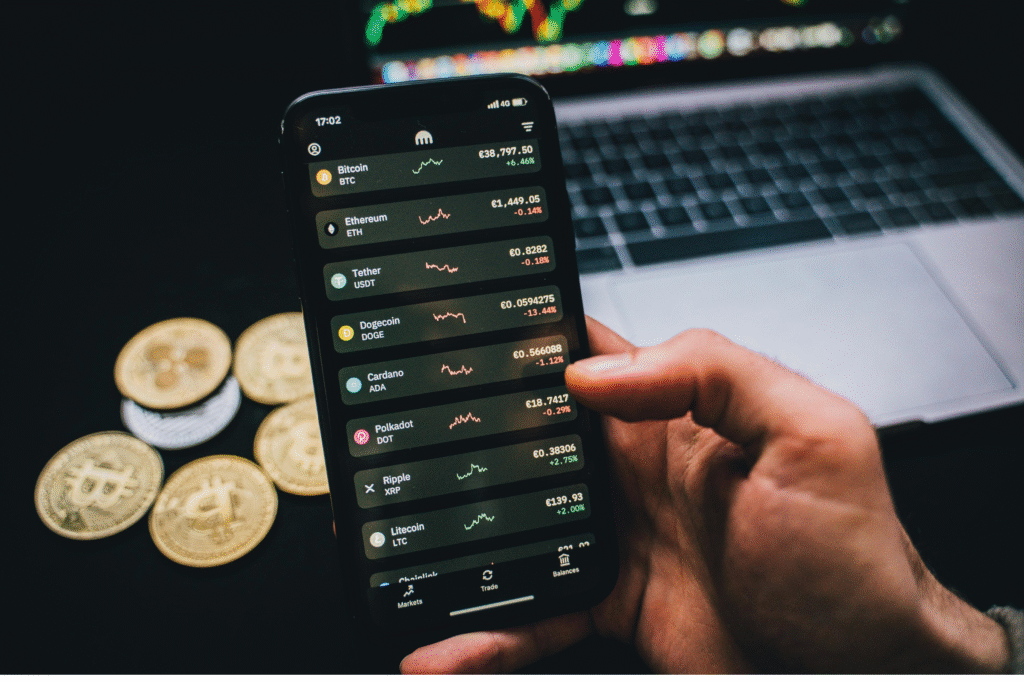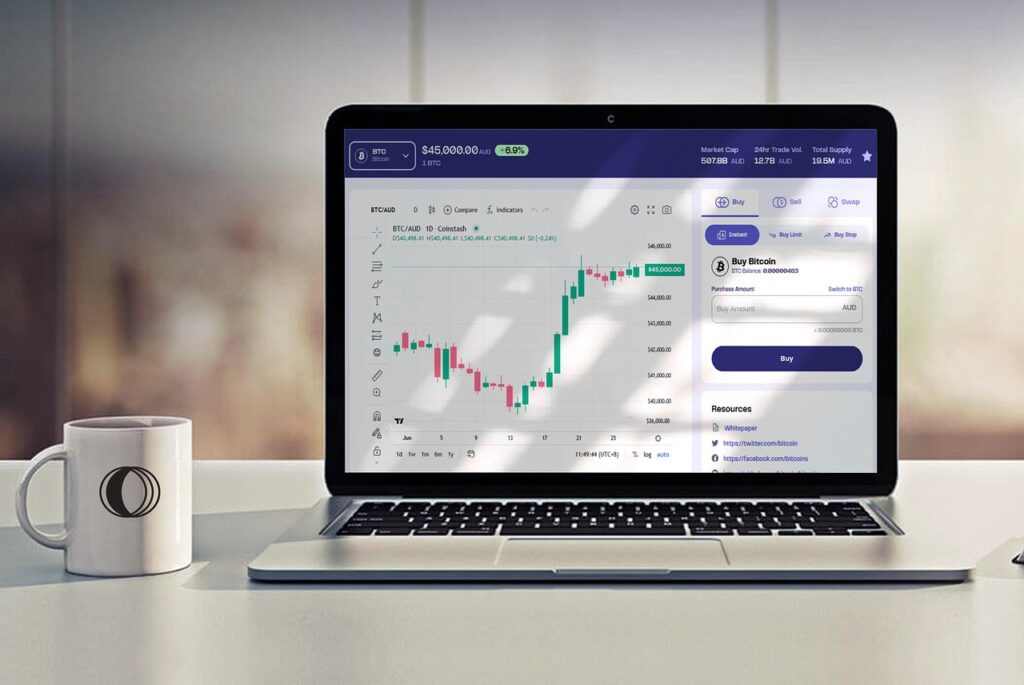What is a Bitcoin? best review 2025
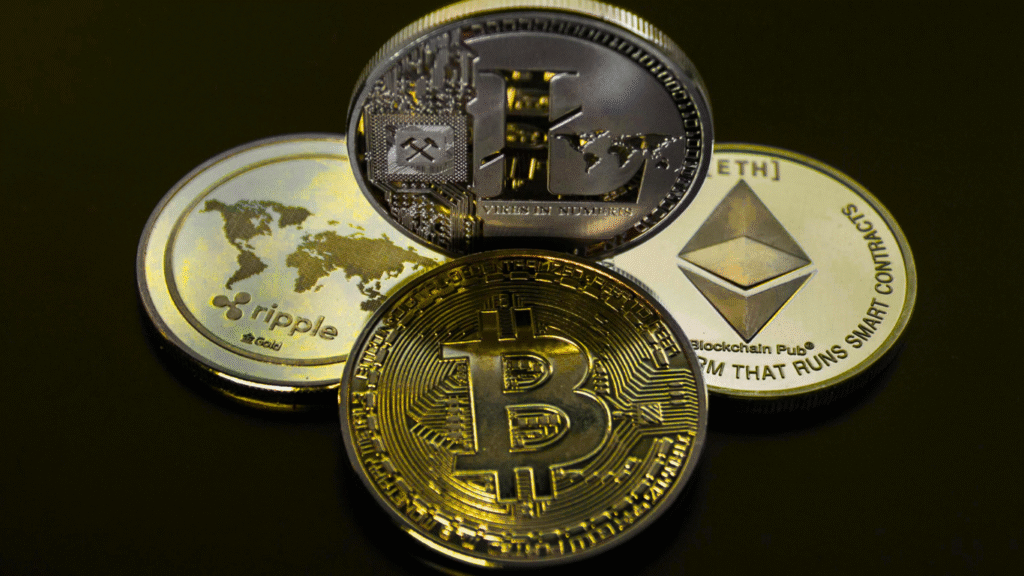
Bitcoin is a digital currency, or more technically, a cryptocurrency. It’s money that lives completely online—there are no coins or bills, no physical form at all. You can’t hold a bitcoin in your hand, but you can use it to buy things, send money to someone, or hold onto it as an investment.
What makes Bitcoin special is that it’s decentralized. That means it’s not controlled by any government, company, or bank. Instead, it runs on a network of computers all over the world. Pretty wild, right?
How Does Bitcoin Work?
Okay, so now that we know what Bitcoin is, the next big question is: how does it actually work?
It might seem like some kind of magic internet money at first, but once you break it down, it starts to make a lot of sense. Let’s walk through it together—no tech degree required.
1: The Digital Ledger (aka the Blockchain)
Imagine a giant notebook that everyone in the world can see, and in this notebook, every single Bitcoin transaction is recorded. That’s what we call the blockchain.
It’s a public ledger basically a super-secure list of all transactions that have ever happened using Bitcoin. Every time someone sends or receives Bitcoin, it gets written into this ledger.
But here’s the cool part: instead of being stored in one place, this notebook lives on thousands of computers around the world. These computers are connected in a network, and they work together to keep everything running smoothly and honestly. No one person or company owns it it’s completely decentralized.
Step 2: The Role of Miners
Now, how do those blocks actually get added to the blockchain? That’s where Bitcoin miners come in.
No, they’re not digging underground with shovels Bitcoin mining is done with powerful computers solving complex math puzzles. These puzzles are super hard to crack, and the first computer to solve it gets to add the next block to the blockchain.
As a reward, that miner earns some brand-new Bitcoin. That’s how new bitcoins are created and introduced into circulation. (That reward cuts in half every few years, by the way it’s part of Bitcoin’s design to keep it scarce.)
Step 3: Sending & Receiving Bitcoin
Using Bitcoin is kind of like sending an email, but instead of an email address, you’re sending money to a Bitcoin address (a string of letters and numbers, kind of like an account number).
Here’s what you need:
- A Bitcoin wallet – this stores your Bitcoin and your private key (basically, your password to access your funds).
- The receiver’s Bitcoin address – where you’re sending the money.
Once you hit send:
- The transaction is broadcast to the network.
- It gets verified by the miners.
- It’s added to a block.
- That block is added to the blockchain.
- Done! The receiver now officially owns that Bitcoin.
It usually takes around 10 minutes for a transaction to be confirmed, although that can vary depending on network traffic.
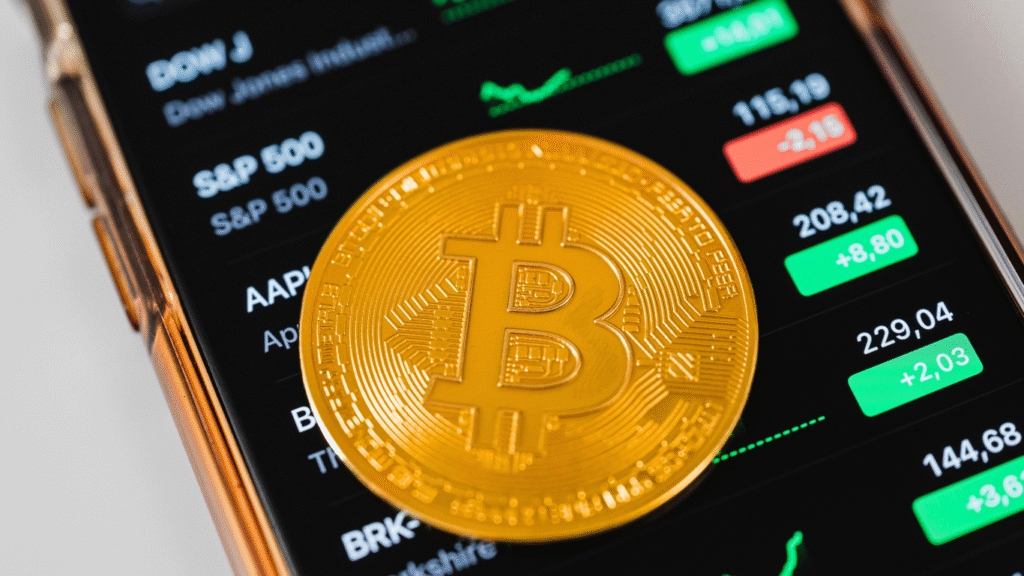
How Do You Get Bitcoin?
So you’ve heard all about what Bitcoin is and how it works, and now you’re wondering how do I actually get some? Don’t worry, you don’t need to be a tech wizard or wear a hoodie in a dark room to get Bitcoin
There are several ways you can get your hands on Bitcoin, whether you want to buy it, earn it, or even mine it. Let’s break them down one by one.
1. Buy Bitcoin on a Crypto Exchange (Most Common Way)
This is by far the easiest and most popular method. You can buy Bitcoin using regular money like dollars, euros, or whatever currency you use on a cryptocurrency exchange.
Here’s how it works:
- Sign up on a trusted exchange like Coinbase, Binance, Kraken, or Bitstamp.
- Verify your identity (kind of like opening a bank account).
- Link your bank account, credit card, or debit card.
- Buy Bitcoin!
2. Mine Bitcoin (More Advanced)
Bitcoin mining is how new bitcoins are created. It involves using powerful computers to solve complex math problems. The first computer to solve the problem gets rewarded with Bitcoin.
BUT… mining has become super competitive and requires expensive hardware and lots of electricity, so it’s not really practical for beginners anymore.
Unless you’re a techie with a solid setup and cheap power, this might not be the route for you.
3. Earn Bitcoin
Yes, you can actually earn Bitcoin like you’d earn cash—just by working or offering services.
Some ideas:
- Freelancing and getting paid in Bitcoin
- Selling products online and accepting Bitcoin payments
- Joining platforms like Fiverr, Bitwage, or CryptoGrind that let you accept Bitcoin
This is a great way to get Bitcoin without spending your own money.
4. Get Bitcoin from Someone Else
Just like someone could give you cash, they could also send you some Bitcoin directly.
All you need is a Bitcoin wallet and an address (kind of like your Bitcoin “email”). They enter your address, send the Bitcoin, and it shows up in your wallet.
5. Earn Small Amounts via Apps or Rewards (a.k.a. Faucets)
There are websites and apps that give away tiny amounts of Bitcoin (called satoshis) for completing simple tasks, surveys, or watching ads. These are called Bitcoin faucets.
You won’t get rich, but it’s a fun way to learn the ropes.
Apps to explore:
FaucetPay or Cointiply (micropayments)
Fold (get Bitcoin rewards for shopping)
Brave Browser (earn crypto for watching ads)
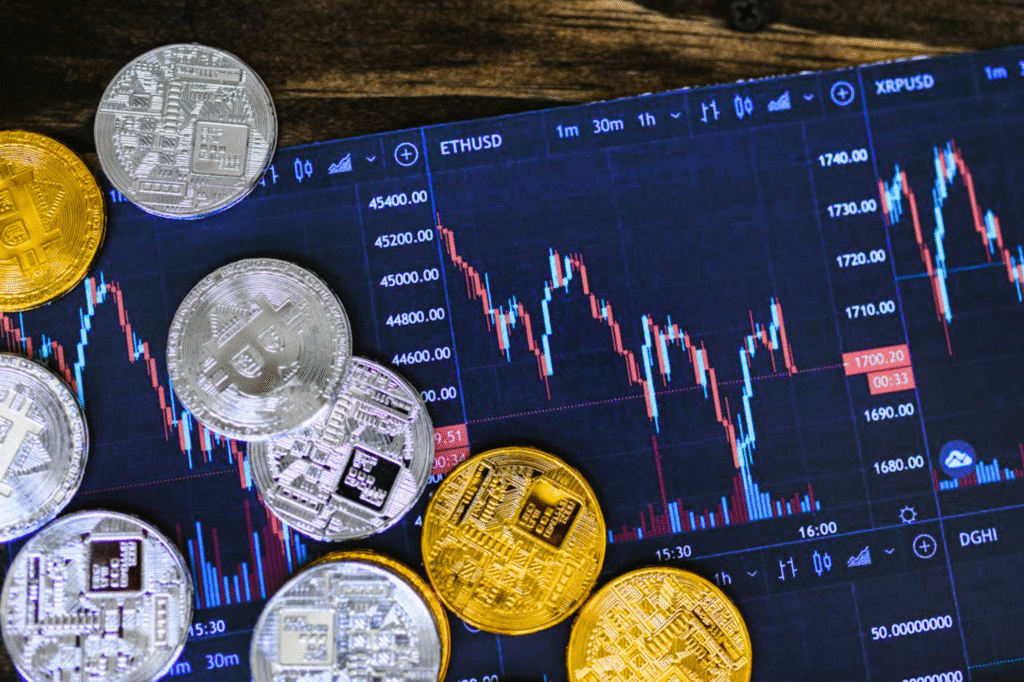
Why Is Bitcoin Valuable?
I mean, it’s just digital numbers on a screen, right? It’s not backed by gold, and you can’t exactly hold it in your hand.
And yet, people are paying thousands of dollars for a single Bitcoin. Why?
Let’s break it down together in a way that makes sense—even if you’re totally new to the world of crypto.
1. It’s Decentralized (No Middlemen = More Freedom)
One of Bitcoin’s biggest selling points is that no single person, company, or government controls it. It’s decentralized. That means you don’t need a bank, PayPal, or any financial institution to send or receive money.
This is a huge deal—especially in countries where banking isn’t accessible or where inflation is out of control. Bitcoin gives people financial freedom, and that’s incredibly valuable.
2. It’s Limited – Only 21 Million Will Ever Exist
Here’s something interesting: Bitcoin has a fixed supply. There will never be more than 21 million bitcoins, ever. It’s built into the code.
This makes Bitcoin scarce, kind of like gold. You can’t just “print” more of it the way governments print money. That limited supply creates value especially as demand keeps growing.
3. It’s Becoming More Widely Accepted
When Bitcoin first started, barely anyone took it seriously. Now? Big companies, payment apps, and even countries are getting on board.
You can use Bitcoin to:
- Buy things online
- Send money across borders
- Hold it as a long-term investment (aka “digital gold”)
As more people trust and use Bitcoin, its value keeps rising.
4. People See It as a Store of Value
Just like people buy gold or real estate to protect their wealth, many see Bitcoin as a way to do the same—but in digital form.
Why?
- It can’t be inflated.
- It’s portable—you can take your Bitcoin across borders on a phone or USB drive.
- It’s not tied to any government or economy.
Because of that, people hold Bitcoin the way you’d hold gold during uncertain times. That trust = value.
5. It’s Built on a Secure, Transparent Technology
Bitcoin runs on something called the blockchain, which is:
- Public
- Secure
- Tamper-proof
Every transaction is verified and permanently recorded. This transparency builds trust—something traditional financial systems often lack.
People value systems that are trustless (meaning you don’t have to trust anyone for it to work), and Bitcoin delivers that.
6. Supply vs. Demand = Price
This part is simple economics. When lots of people want something that’s in short supply, the price goes up.
With only 21 million Bitcoins available and millions of people around the world trying to get a piece, that demand helps drive its price and its value.
Is Bitcoin Safe?
Short answer: Yes, Bitcoin is safe…
BUT — there’s a catch.
The technology behind Bitcoin is extremely secure, but how you use it? That’s where things can go wrong.
Let’s break it all down so you can understand where Bitcoin shines when it comes to safety — and where you need to be extra careful.
1. The Technology: Super Secure
Bitcoin is built on a technology called the blockchain, which is like a giant digital ledger that records every single transaction ever made. It’s public, transparent, and tamper-proof.
- Every transaction is verified by a global network of computers.
- The system uses cryptography to secure data.
- Once something is added to the blockchain, it can’t be changed.
So in terms of technical security, Bitcoin is very reliable.
Fun fact: Bitcoin has never been “hacked” at the protocol level. It’s been running since 2009 without a single day of downtime.
2. The Human Side: That’s Where Risks Come In
While Bitcoin itself is secure, the tools people use to access it — like wallets, exchanges, and apps — can be vulnerable if not handled carefully.
Here are the main risks and how to avoid them:
a. Losing Your Private Key
Your private key is like the password to your Bitcoin wallet. If you lose it, your Bitcoin is gone forever. There’s no “Forgot Password” button.
What to do: Always back up your wallet and store your private key in a safe place ideally offline.
b. Scams and Phishing
Scammers target people who are new to crypto by setting up fake websites, impersonating exchanges, or offering “too good to be true” giveaways.
What to do: Never share your private key. Always double-check URLs and only use trusted platforms.
c. Exchanges Can Be Hacked
Some cryptocurrency exchanges have been hacked in the past, and users lost their Bitcoin.
What to do: If you’re holding a large amount of Bitcoin, don’t leave it on an exchange. Move it to a private wallet that only you control.
3. How Should You Store Your Bitcoin?
There are three main types of wallets you can use to store your Bitcoin, each with different levels of safety:
| Type | Example | Safety Level | Best For |
|---|---|---|---|
| Hot Wallet | Mobile apps, exchanges | Medium | Convenience, beginners |
| Cold Wallet | Hardware wallets (like Ledger) | High | Long-term storage |
| Paper Wallet | Printed private keys | High (if done right) | Backup storage |
So… Is Bitcoin Safe?
Yes, Bitcoin’s technology is very secure.
But you are in control of your Bitcoin, which means you also carry the responsibility to keep it safe.
Think of it like digital cash. If you drop a $100 bill on the street, it’s gone. Same thing with Bitcoin — if you lose your wallet key or get scammed, there’s no way to recover it.
Conclusion
Bitcoin might sound complicated at first, but once you break it down, it’s really just a new way to think about money — one that’s digital, decentralized, and open to everyone.
We’ve covered a lot:
- What Bitcoin is
- How it works
- How to get it
- Why it’s valuable
- Whether it’s safe to use
The bottom line? Bitcoin is changing how people store, send, and think about money. It gives you more control, more freedom, and more options — but it also comes with responsibility.
If you’re curious, the best thing you can do is keep learning, start small, and explore at your own pace. You don’t need to be a tech expert or a finance guru just someone who’s willing to try something new.
Bitcoin is still evolving, and it’s not perfect but it’s already had a huge impact, and the journey is just getting started. see
